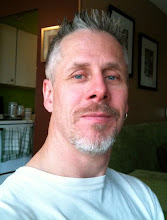
While I was getting my hair cut this afternoon, I picked up the front section of The Toronto Star. On the third page of the paper, I encountered an interesting article (reproduced below) all about noses.
The nose knows.
Knows who you are, where you've been and, eventually, how nervous you are.
Researchers at two English universities are in the early stages of turning the nose into the ultimate biometric-scan feature: hard to conceal, difficult to change and distinctive from person to person.
"The nose is remarkably good. It lends itself quite well to recognition," Prof. Melvyn Smith, of the University of the West of England in Bristol told the Star.
Smith's team has developed PhotoFace, part of a $1 billion project by the Imperial College, the British Home Office, and General Dynamics, the U.S. defence industry contractor, to create a sophisticated and reliable facial-recognition system.
"Noses are prominent facial features and yet their use as a biometric has been largely unexplored," said Dr. Adrian Evans, of the University of Bath, which took PhotoFace and focused it on the human nose.
"Ears have been looked at in detail. Eyes have been looked at in terms of iris recognition. But the nose has been neglected."
Six main nose types emerged: Roman, Greek, Nubian, hawk, snub and turn-up.
The ridge of the nose – the line running from the spot between the eyes to the nose tip – turns out to be distinctive from person to person, said Smith, who has a Roman nose.
Unlike irises (which can be distorted with drops) or faces (which can wreck complex recognition algorithms simply by smiling), the nose "is largely invariant," said Evans, who has a Greek nose.
"They're also hard to conceal without attracting attention."
With only 40 noses studied in various lighting and aspects, the research is in its early stages.
Work is underway on another 160 noses to push the success factor beyond 50 per cent. But Smith and Evans can envision where the research is going.
"The main goal for the Home Office is to create a database of as many faces as possible," said Smith. "For General Dynamics, their interest is turning this into immigration control and controlled access to buildings."
The larger the database, the more flexibility police would have in matching a face captured by a closed-circuit television camera on the street with a face captured by another camera.
Or, as Evans emphasized, "You could see someone in one part of the airport, capture the nose there, and then see them in another place with a pattern of behaviour that is unusual" and match the two images.
From there, said Smith, work could branch into "mood analysis in security applications. Is a person being misleading? Can it detect deceit?"
PhotoFace works by "taking photos lit by a flash from several different angles so that four images are taken in very rapid succession of every point on the face, each under different controlled lighting conditions," said Smith.
Then, software is used to analyze the shading and works out coordinates for each point on the nose or face.
Future research will not only build up the database but refine the recognition.
A smile or a scowl changes the facial equation.
Scientists also need to know if you really do have your father's nose, according to a computer analysis, and whether your 18-year-old nose and your 62-year-old nose are the same.
"It's far and away nowhere near the success of an iris biometric right now," said Evans. "But the potential is there."







No comments:
Post a Comment